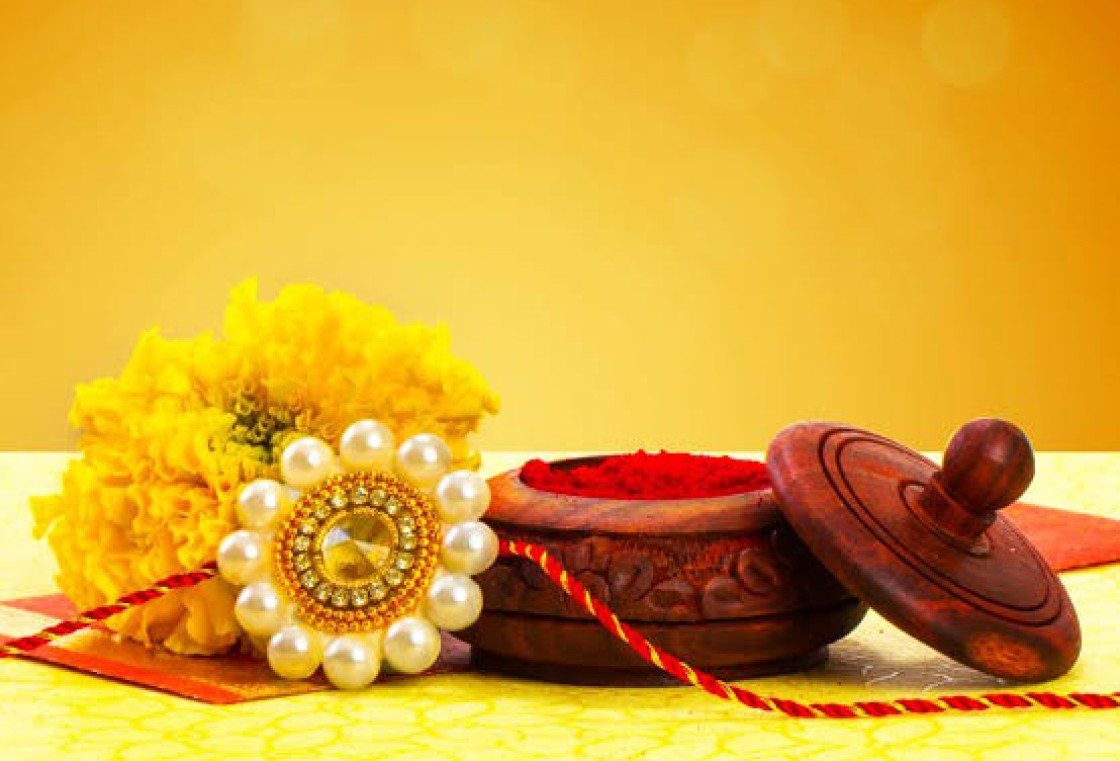The bond between a brother & a sister is simply unique & is beyond description in words. The relationship between siblings is extraordinary & is given importance in every part of the world. However, when it comes to India, the relationship becomes all the more important as there is a festival called Rakshabandhan (रक्षाबंधनम्) dedicated to the sibling love.
The festival of Rakshabandhan (रक्षाबंधनम्) is observed as a symbol of a unique bond between brothers & sisters. The occasion is meant to celebrate a relationship of brother-sister between men & women who may not be biologically related.
On this day, a sister ties a Raksha sutra (रक्षासूत्रम्), which is also known as Rakhi around the wrist of her brother in order to pray for the prosperity, health & well-being of her brother & in return brother promises to take care & protect her sister always from every situations & also offers her favourite gifts, cash etc. The festival is also celebrated between brother-sister belonging to distant family members, relatives or cousins. This festival is also celebrated with the one who is not biologically connected but still considered as a brother. It is also tied on Sister-in-law’s wrist too.
This festival is considered as the most auspicious & pure festival as it symbolizes the love & bond of the very special relationship of brother & sister. This special Hindu festival is celebrated in India & countries like Nepal. The name of the festival Rakshabandhan (रक्षाबंधनम्) is a Sanskrit word where Raksha means a protecting thread & Bandhan means tying. So, the meaning of the word Rakshabandhan means tying a protecting thread. The festival Rakshabandhan (रक्षाबंधनम्) is celebrated on the full moon day of the bright fortnight of the Shravan month (श्रावणः शुक्लपक्षे पूर्णिमा) which generally falls in the month of August.
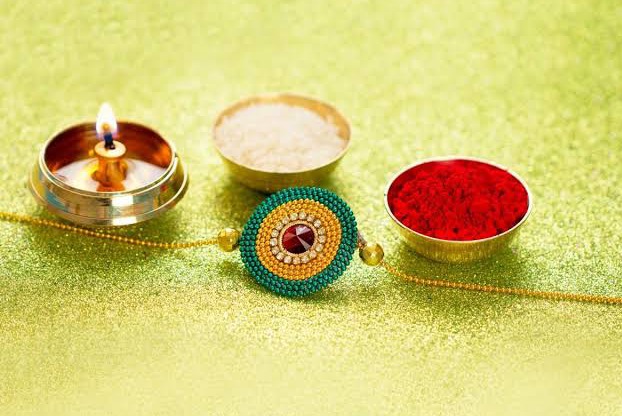
Significance of Rakshabandhan (रक्षाबंधनम्) –
Rakshabandhan (रक्षाबंधनम्) is a festival where a sister ties a sacred thread around the wrist of her brother. This festival falls on a full moon day in the month of Shravan (August) which is mid monsoon. However, apart from being a festival that celebrates the bond of love between brother & sister, it does have a science surrounding good health rooted in it.
So, to know the scientific significance, first we must know about the Tridoshas (त्रीदोषाः) that govern our body;
According to the Ayurveda, our human body is a combination of three energy faults which are known as Tridoshas (त्रीदोषाः). These Doshas are Vata (वातः), pitta (पित्तम्) & Kapha (कफः). These energies are formed by the combination of Panch Mahabhutas (पञ्च माहाभूताः) (Five Elements) that include Earth (पृथ्वी), Water (जलम्), Fire (अग्निः), Air (वायुः) & Ether/ Space (आकाशः).
1. Vata Dosha (वातः) - a combination of Ether/ Space (आकाशः) & Air (वायुः).
2. Pitta Dosha (पित्तम्) - a combination of Fire (अग्निः) & Water (जलम्).
3. Kapha Dosha (कफः) - a combination of Earth (पृथ्वी) & Water (जलम्).
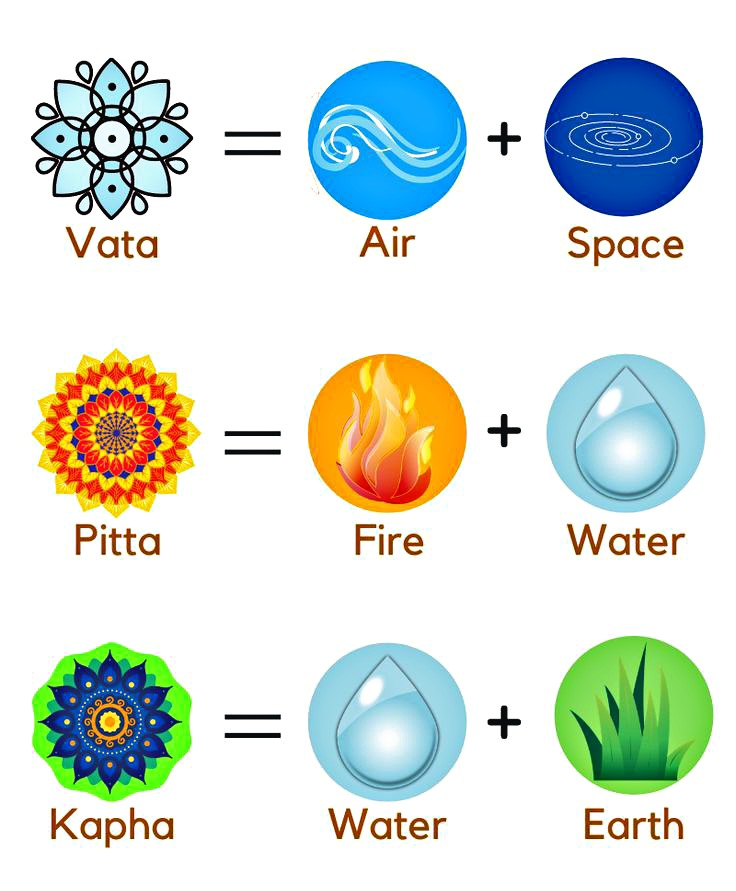
An imbalance in any of these Three Doshas (त्रीदोषाः) is the cause of illness, hence it is necessary to maintain the balance in these Doshas which helps the body to stay healthy.
Also, weather plays an integral role in affecting the changes in these energy points. As we discussed above, this festival is celebrated during the month of Shravan, which falls in the mid monsoon month. This is the time when the Earth begins to cool. The body cools down considerably, which leads to the fluctuation of immunity. The digestion of the body also slows down thereby, making one prone to infections. The air being humid carries bacteria & viruses in it. Hence, it is always advisable to abstain from eating non-vegetarian food, spicy food, leafy vegetables & keep the diet light. The moisture in air suppresses the metabolism of body & makes the body more prone to illness. This leads to a drop in immunity too.
Do you know why do we tie a Mauli (a sacred thread) around the wrist? A mauli (a sacred thread) is tied on the right hand of men & the left hand of the married women. The same applies to check the Nadi (नाडी) (the pulse of the hand) too. In the case of men, it is checked on the right hand & in case of women it is checked on the left hand.
Rakhi is a different form of Mauli (a sacred thread) that is tied on the right wrist of brothers on the bright fortnight of the full moon day of Shravan month (श्रावणः शुक्लपक्षे पूर्णिमा). As we all know that, all the veins of the body start from the wrist & tying a Mauli or a sacred thread on the wrist helps in balancing the Nadi (नाडी) (the pulse of the hand) & all the Three Doshas (त्रीदोषाः). When a small amount of weight is placed over the wrists, it activates the nerve centres in the area which thereby helps in improving the circulation of blood & controlling the energy points. As per acupressure, tying the thread maintains the texture of blood, thus keeping one's immunity fit & well-functioning.
During the Vedic period, the Rakhi was usually made of red & yellow thread only, later it got modernised & now there are different kinds of Rakhi with different colour & embellished with either pearls, rudraksh or other fashionable designs for beautification. But still, we get Rakhis made with red thread with minimal embellishes & also with read & yellow thread which is more preferable to tie.
As per religious texts, the Mauli represents Brahma, Vishnu & Mahesh. They also represent Vata (वातः), Pitta (पित्तम्) & Kapha (कफः). Brahma symbolizes Vata dosha which is formless & dynamic. Mahesh represents Pitta dosha which is fiery & confidant. Whereas Kapha dosha represents Vishnu which is attractive & faultless. So, a Mauli is tied to balance these Three Doshas (त्रीदोषाः), & spiritually people say that tying a Mauli will protect one from bad omen & negative energies which is also true as scientifically when the three doshas are balanced, the body will be less prone to any kind of illness which in a way protects the body from negative energies & viruses. The same is the reason for tying a Rakhi so that the Rakhi protects the brothers from every kind of sickness.
During ancient times the Rakhi was only tied to brothers & not sister-in-law, as time passed people started tying Rakhi to sister-in-law too. Now, the question is why we tie Rakhi to only men? The answer to this question is also connected to the scientific significance. As per science, women have better immunity in comparison to men. They are less prone to bacterial, fungal & other infections. Men who have a higher level of testosterone hormone have a lower antibody response even in the case of vaccines.
Hormones tend to influence the immune system of men & women differently. Estrogen has an immune-stimulating effect while androgens have an immune-suppressing effect. Thus, in the case of men they are slightly more prone to bacterial infection & viruses which are more prevalent during monsoon. Tying a Rakhi around the wrist brings a balance in nadis (नाडी), betters the blood circulation & thereby protects them to fight bacteria & infections in a better manner.
So, it is tied by sisters on the right hand of brothers. Through this, she ensures her brother is fit & free of illness. Accordingly, the thread is the mark of protecting your brother from negative energy, blessing with good health & prosperity.
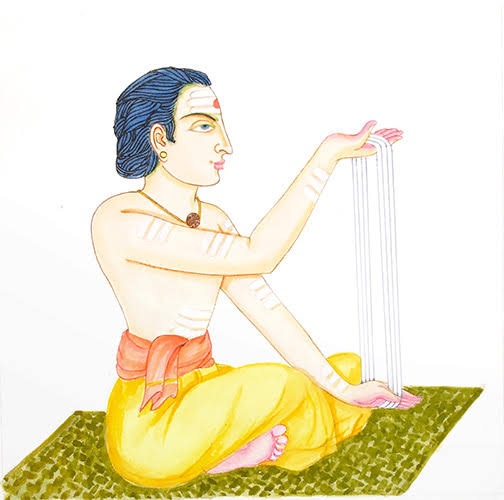
Now let us understand the reason behind changing Yagnopavita (यज्ञोपवीतम्) by Brahmins on the full moon day of the bright fortnight of the Shravana month (श्रावणः शुक्लपक्षे पूर्णिमा);
Yaganopavit (यज्ञोपवीतम्) is a sacred thread which is worn by Brahmin men. During Vedic times Kshatriya & Vaishya also used to wear Yagnopavita (यज्ञोपवीतम्). Yagnopavita (यज्ञोपवीतम्) is only worn after the Upanayan Sanskar (उपनयन संस्कारः) – a ceremony of commencing with a sacred thread. After wearing a sacred thread (Yagnopavita) (यज्ञोपवीतम्), one is eligible to perform the Sacrificial rites (यज्ञ-यागादि कर्मः); after wearing Yagnopavita (यज्ञोपवीतम्), one is eligible to recite the Veda Mantras.
Each & everyone is born in a particular Gotra (गोत्रम्) – lineage of a particular Rishi & according to that, the person is placed into different Vedas. As we have four Vedas (RigVeda, YajurVeda, SamaVeda & AtharvaVeda), each caste (Brahmin, Kshatriya, Vaishya & Shudra) have a different subdivision of a particular Veda. Just like that, the Brahmins who belong to RigVeda, YajurVeda & AtharvaVeda changes their Yagnopavita (यज्ञोपवीतम्) (a sacred thread) on the full moon day of the bright fortnight of the Shravana month (श्रावणः शुक्लपक्षे पूर्णिमा) which is the festival of Rakshabandhan (रक्षाबंधनम्) & the Brahmins who belongs to SamaVeda, changes their Yagnopavita (यज्ञोपवीतम्) (a sacred thread) on the third day of the bright fortnight of the Bhadrapada month (भाद्रपदः शुक्लपक्षे तृतीया) which is the festival of Haritalika trutiya (हरितालिका तृतीया) (also known as Kevda teej).
The reason of changing the Yagnopavita (यज्ञोपवीतम्) (a sacred thread) on the Rakshabandhan (रक्षाबंधनम्) day is, this day is considered as the most auspicious day. Also, in the month of Shravan this day, mostly falls under a constellation named Shravana so changing of Yagnopavita (यज्ञोपवीतम्) (a sacred thread) is done on this day.
Also, according to the Scriptures, Yagnopavita (यज्ञोपवीतम्) is like a defence shield which protects from all the negative energies so, the one which protects mind & body from the inside is worshipped on this day & new Yagnopavita (यज्ञोपवीतम्) is worn.
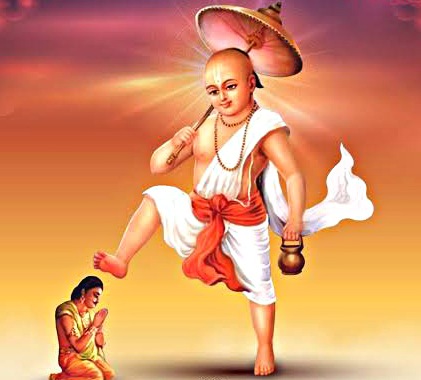
Historical account of Rakshabandhan (रक्षाबंधनम्) –
There are two Legends connected to this day. Firstly, according to the Bhagwat Purana, demon King Bali lost his powers after the churning of the ocean. So, to gain back his powers he performed the Vishvajeeta Yagna as prescribed by Sage Shukracharya. After completing the Yagna, he received his powers back & he defeated Indra Dev. Later he kept on performing such Sacrificial rites so that no one can defeat him.
But a few years later, Bhagwan Vishnu incarnated as the son of Sage Kashyap & his wife Aditi as Vaamana Dev (5th incarnation). One day when king Bali was performing the sacrificial rites, Vaamana Dev arrived there. As king Bali was known as the king of charity, he asked the Brahmin boy for anything he wants. Vaamana Dev asked for three steps of land from the demon Bali as a charity.
King Bali thought that dwarf sized boy will not be able to take much land so he agreed. After promising, Vaamana Dev measured the earth, sky & directions in one step & took heaven in the second step. Looking at this, king Bali understood that he is not an ordinary human so, surrendered himself & offered his head as the third step. Pleased with king Bali, Vaamana Dev told him to ask for a boon. Bali wanted Bhagwan Vishnu to reside with him always. Then Goddess Lakshmi, to save her husband from the bondage of boon & she made king Bali her brother by tying a Raksha sutra (रक्षासूत्रम्) (Rakhi) & requested to free Bhagwan Vishnu from the promise. King Bali freed Bhagwan Vishnu from his promise, but took the promise of living in Patala Lok for four months in his kingdom every year. Since this day, tying a Raksha sutra on the wrist of the brothers has started.
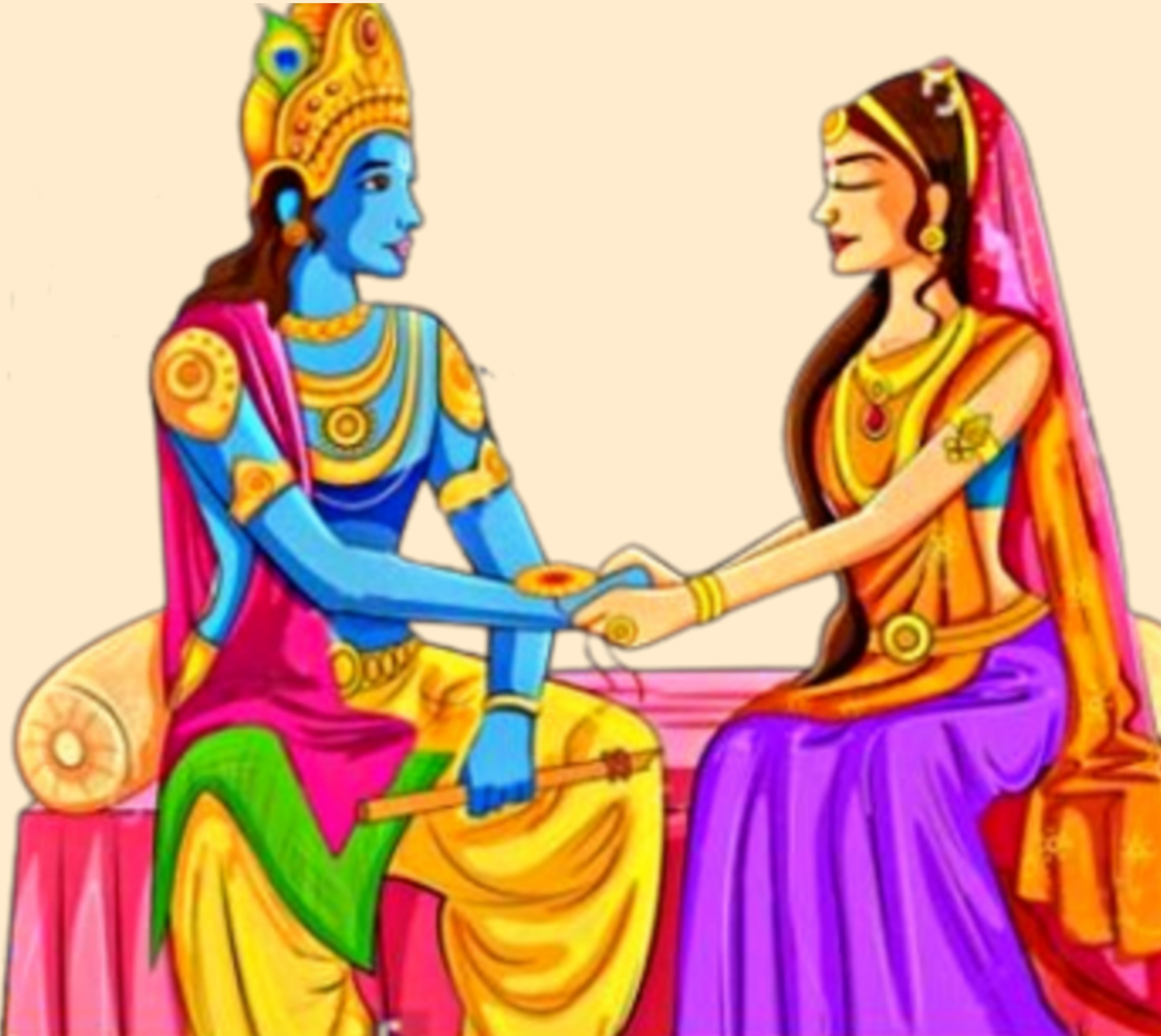
Another legend connected to this day is, according to the Mahabharata; once Bhagwan Krishna had accidentally cut his finger with the Sudarshan Chakra. Draupadi, the wife of Pandavas felt a lot of pain seeing him hurt & she immediately tore a piece of her cloth & tied it to Bhagwan Krishna's bleeding finger to help soothe his pain & stop the blood from flowing. Bhagwan Krishna was deeply touched by her gesture & in return promised to take care of her from all evils in the world. He called it the Raksha Sutra. And as we know that when Kauravas tried to dishonour her in the court by attempting to uncover her saree, Lord Krishna blessed his sister & made sure that the saree she was wearing became endless in length. This is how her brother saved her from the evils - as he had promised.
As these two famous historical events are connected to this day, Hindus celebrated it with great faith & enthusiasm.
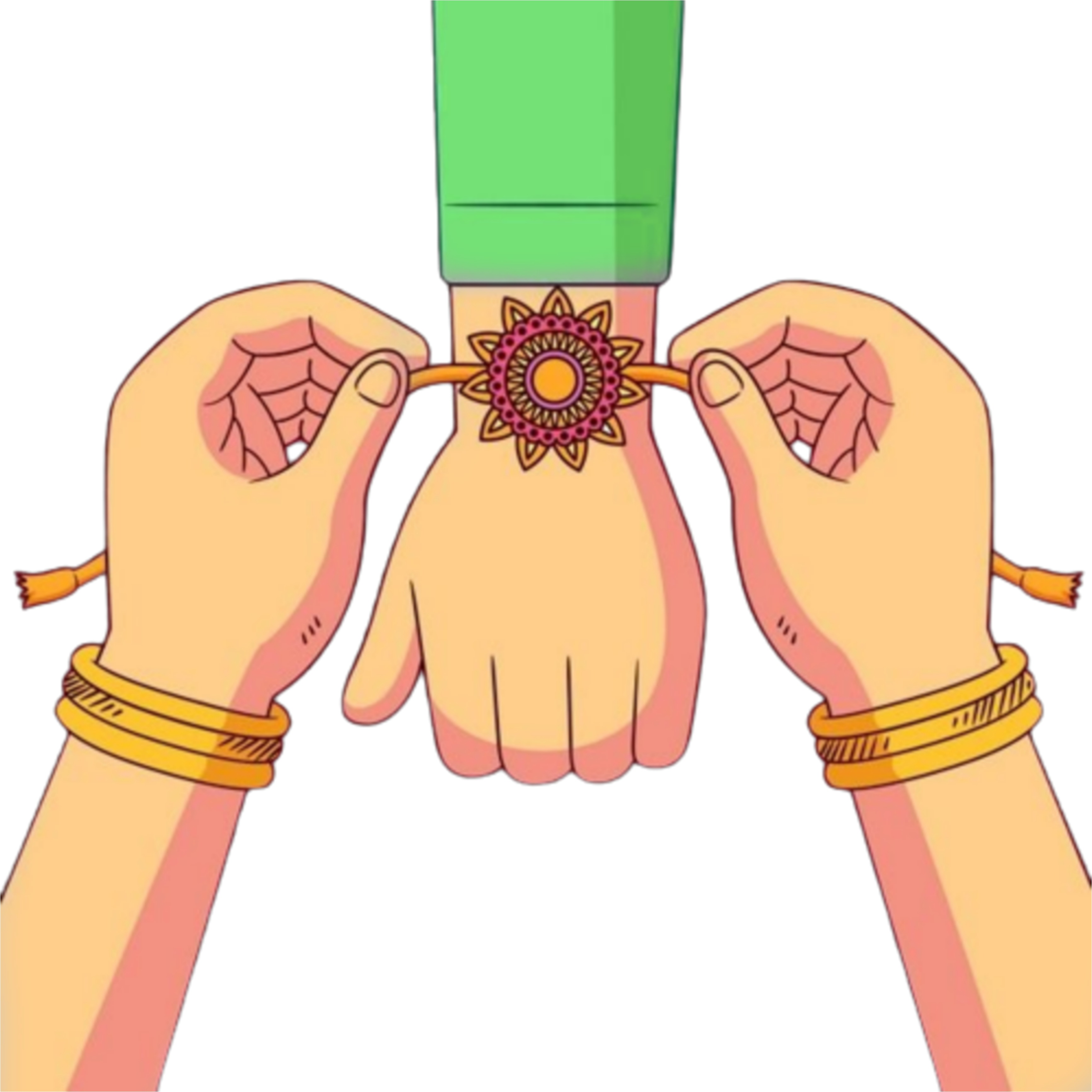
Ritual ceremony of Rakshabandhan (रक्षाबंधनम्) –
Since the Vedic time, this festival is marked as a day to cherish the most pious relation on this planet. The festival of Rakshabandhan (रक्षाबंधनम्) is widely celebrated all across India & its name changes from different places to places. The auspicious festival of Rakhi symbolizes the sacred bond of love & affection that is strengthened by Rakhi for brothers. The festival of Rakshabandhan (रक्षाबंधनम्) is being considered as a dedicated occasion for celebrating wonderful bond of siblinghood with the brothers.
On this day, everyone wakes up early in the morning & visit temples. Sometimes Rakhi is also offered to the Gods & Goddesses as a request to protect us from all the evils. Later, Brahmins worship the Yagnopavita (यज्ञोपवीतम्) (a sacred thread) & change the old one by wearing new one. Only after completing the changing of Yagnopavita (यज्ञोपवीतम्), Brahmins can let their sisters tie Rakhi on the wrist.
Sisters visit her brother’s house with Rakhi & sweets. Sisters wave the lamp (Arti) to her brother, apply the red turmeric powder (कुंकुमः) & raw rice on the forehead of the brother & tie Rakhi & offer sweets. In return brother promises her to protect her always & also offer some gifts or cash, etc.
This day is also known as Nariyeli Poornima – coconut day. Nariyeli Poornima is celebrated by the people who live on the banks of the oceans & especially by the fishermen. It is majorly observed in the western coastal regions. Nariyeli Poornima is observed with great enthusiasm & faith in Maharashtra & adjoining Konkani regions. People from the fisherman community celebrate this festival to ward off unfortunate incidents while sailing in the sea.
On this day devotees worship Lord Varun. On this occasion, a coconut is offered to the Lord of Sea. It is believed that performing the puja rituals on Shravana Poornima, they can please the Lord & seek his protection from all dangers of the sea. Nariyeli Poornima is a gesture of gratitude & respect towards Mother Nature. People also plant coconut trees along the coast.
After completing the puja rituals, fishermen sail in the sea, in their ornately decorated boats. After making a short trip, they return to the shore & spend the rest of the day celebrating the festivities. Dancing & singing are the main attraction of this festival. On this day, different people of different caste celebrate this day differently with the same faith & enthusiasm.
Thus, this day is considered as the most auspicious day & has a special place for siblings. As we all celebrate our festivals with great enthusiasm, but when we understand the religious, historical as well as scientific reasons connected to the festival, we can then understand the festival more deeply & we celebrate it with a greater faith. With the commercialization of festivals, the actual meaning has got hid behind the mixed legends of society. It is splendid how people in the ancient day could combine rituals & science together to bring betterment of the society & health. Knowing or unknowingly, we cannot deny the science that exists underneath our rituals & festivals.
भाद्रपदः कृष्णपक्षे ०२,२०७८
